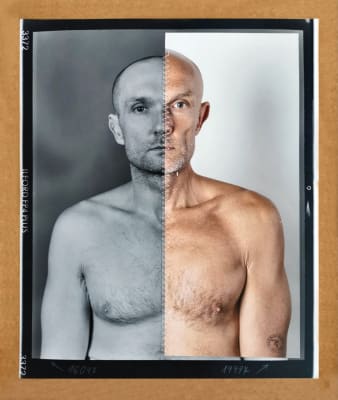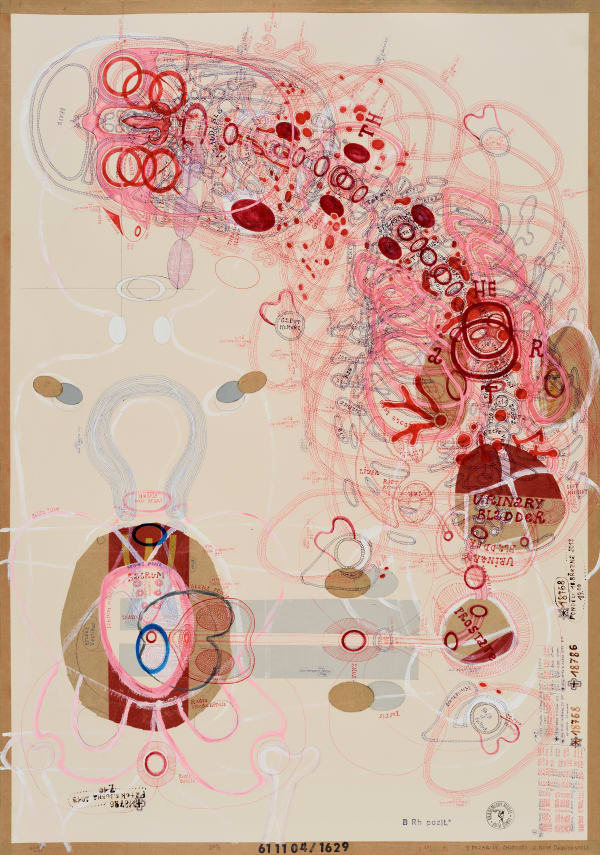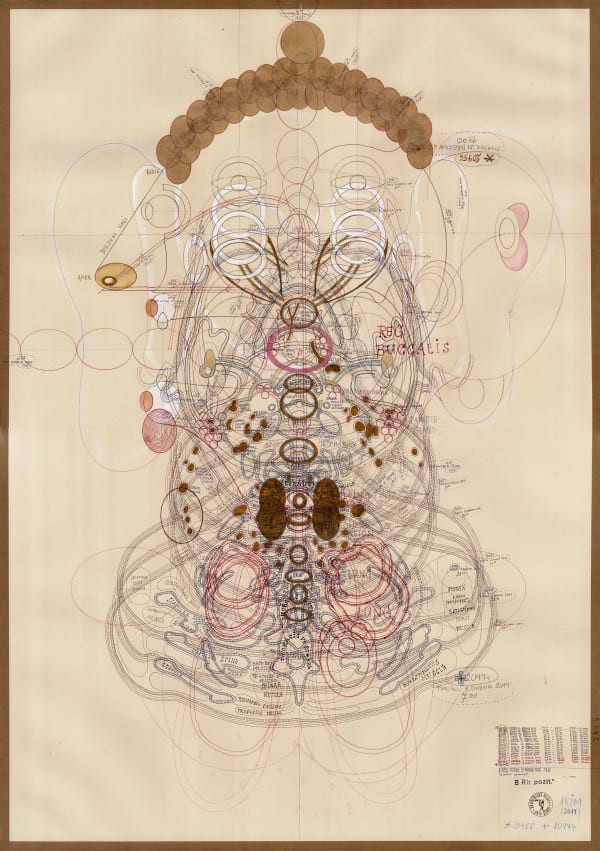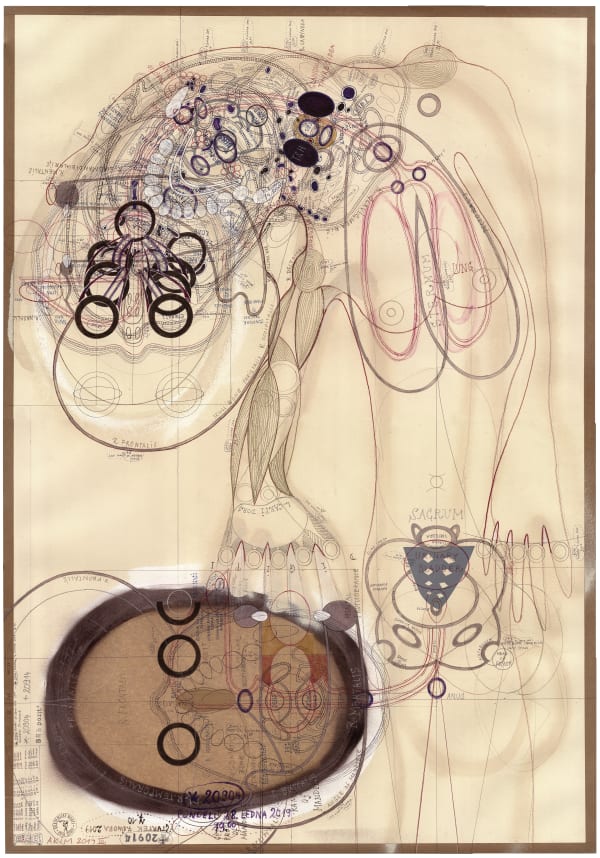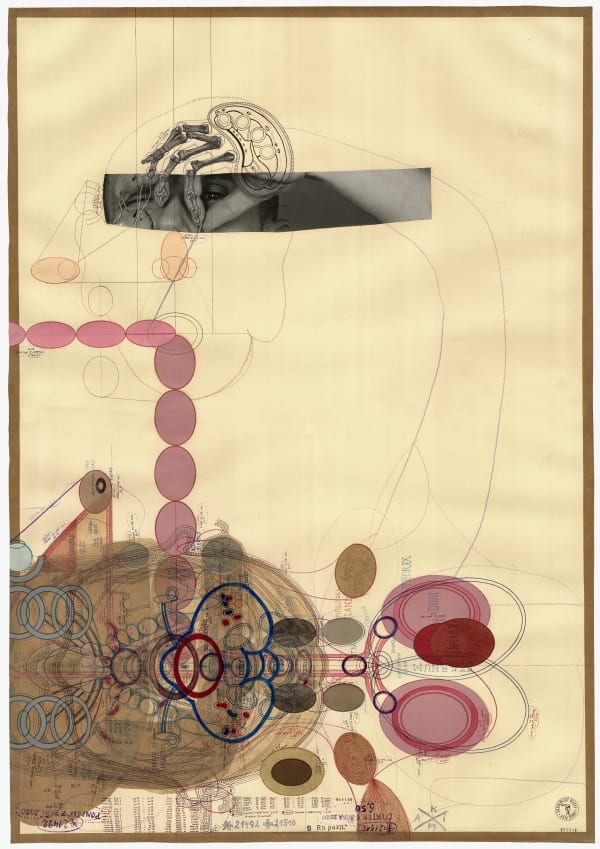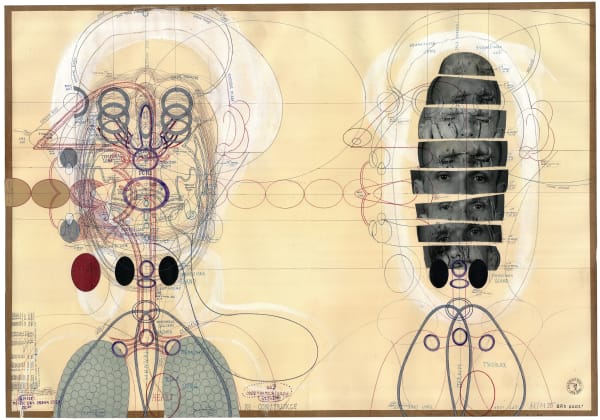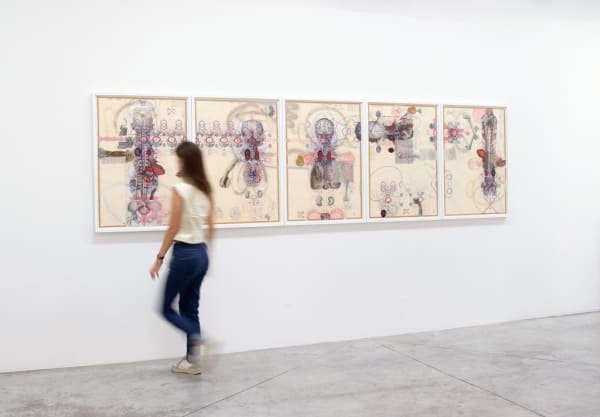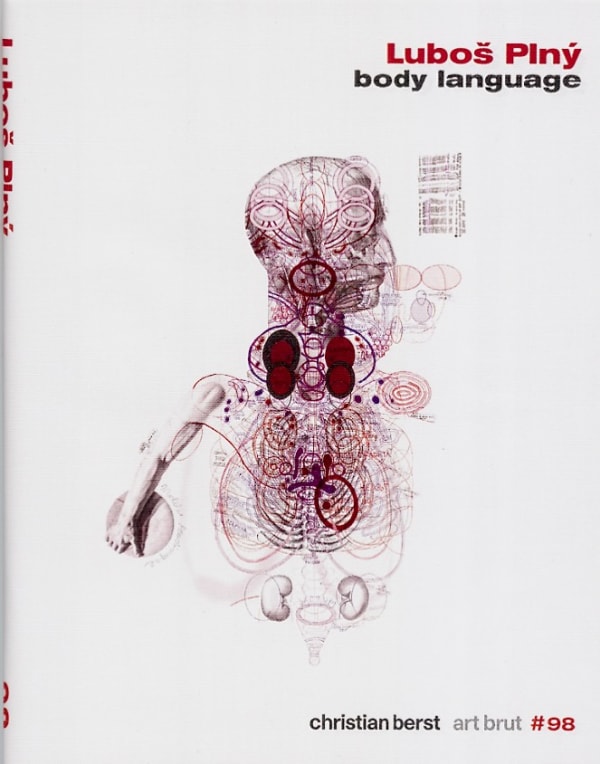Luboš Plný was born in 1961 in the Czech Republic. From an early age, he had two passions: drawing and anatomy. While serving in the military, he was diagnosed with schizophrenia and consequently hospitalized. This prompted him to delve deeply into the study of psychiatric and medical literature. Fascinated by the body’s decay and the concept of dissection, he became an undertaker, but for several years he was mainly employed as a live model at the Academy of Fine Arts in Prague. Hence the stamp with which he signs all his works: “Luboš Plný, academic model.”
Plný began making art in the early 2000s. His works are codified examinations of the body; what animates and runs through it, as well as what threatens its deterioration. Lines and segments, resembling topographic surveys, are marked with numbers. These numbers do not indicate coordinates or altitudes but rather the moment and duration of when each part of the artwork was created. These notations consistently refer to the margin of the drawing, where they are meticulously written out and detail the sequences. This almost liturgical relationship with time is perfectly illustrated by the two numbers that invariably border the drawing, indicating the artist's age (in days), when he began the process of the artwork, and the age he reached upon its completion. It serves as a final acceptance of his own conclusion, a memento mori where sophistication contends with melancholy. "It's a journal that I pursue daily," he explains.
Plný’s multidisciplinary practice includes performance—which he experiences as an act of purification, transforming psychic and physical suffering into a work of art—and mixed media sculpture inspired by the human reproductive organs.
Plný work was exhibited at the 57th Venice Biennale (titled Viva Arte Viva) curated by Christine Macel in 2017. He was the first outsider artist to be acquired by the Centre Pompidou in 2013. Since then he has been featured in a number of institutional exhibitions: at the museums of contemporary art in Kobe and Hiroshima in Japan, the Rencontres de la Photographie in Arles, Kunsthalle in Dresden, and in his home city of Prague, where the Dox Art Center devoted a major solo exhibition to him in 2017. In 2022, the Rudolfinum presented a dialogue between his work and that of artists such as Louise Bourgeois, Barthélémy Toguo and William Kentridge.
Self-Portrait by the artist. Courtesy of Galerie Christian Berst
-
"Plný seeks less to show the observable reality of a dissected body than to represent its functioning, real or imaginary, and above all, to translate what he feels in his own body, for it is primarily his organs and humors that he depicts. His drawings have no universal vocation, except for their destiny as works of art. They account for his sufferings, pleasures, and obsessions."
Quote above, and all following quotes, by Philippe Comar
-
-
"his drawings are the antithesis of a medical anatomical plate, which seeks universality and timelessness, and which, therefore, is incapable of accounting for the connections that unite a particular body with its consciousness. Because that is precisely what it is: a personalized anatomy day by day, an ephemeris of the body that records its changes in condition, its internal conflicts, its torments, and its pleasures. Luboš Plný reminds us that the body and the present moment are the only two things given to us."
-
-
"One thinks as much of constellations crossed by cosmic flows as of cellular clusters caught in an intertwining of secretions and effusions. The whole, filled with legends often difficult to decipher, recalls the drawings of those cosmological physicians of the 17th century who, like Robert Fludd, ingeniously recreated the grand theater of the world from the human body."
-
-
Read Philippe Comar's full essay HERE"Boundless bodies like an island without shores, Luboš Plný’s anatomies have no other end than the frame of the painting. They are literally écorchés, bodies deprived of bark that, by losing their envelope, dissolve on the white sheet, embrace the support, and free themselves from the human form to assume that of a work of art. The body becomes a ‘foreign body’—estranged from itself—floating on the surface of the paper."
-
-
"Luboš Plný: Body Language"
Currently on View at Galerie Christian Berst (through October 22) -
